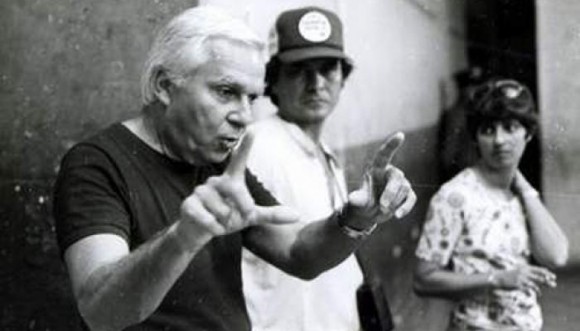
Santiago Alvarez. Photo
The actuality of the audiovisual production of the Cuban documentary filmmaker Santiago Alvarez and informal routes content management that have been developed in the country in recent years, were analyzed today at the Convention 2015 Cuba Broadcasting.
In the Palace of Conventions in the capital, Professor Maribel Acosta Damas De Santiago Alvarez presented the panel to Package Weekly, a terabyte of information Alternatively distributed, the result of recent research conducted by the Faculty of Communication at the University of Havana.
To understand the alignment between these issues Acosta Damas explained that in the current scenario Santiago Alvarez it becomes imperative because it requires finding narratividades containing our time .
This deprives us of prejudice, invites us to experiment and reminds us that the public has much to tell and build with us , argued the professor.
It leads, he continued to study the current Cuban context and emerging audiovisual processes, communication, journalism and cultural practices.
On the other hand, the rapporteur Andy Muñoz said when speaking of Santiago Alvarez is not understood the documentary as a starting point, but a return.
Santiago transcended the way we do cinema of his time as a stage where the filmmakers were betting on the richness and the great works in extension footage, he always preferred synthesis, agility images, and all this resembles more contemporary audiovisual he said.
He added, moreover, that his work would fit perfectly into the new ways of narrating and would be the envy of many consumers Weekly Package.
On the management of audiovisual content in the packet format, speaker Cynthia Quarry Toranzo stated that this looms as one of the most representative phenomena of informal media economy in the Cuban context.
has strengthened and is the result of dynamic questioning economic, legal and operational paradigms of traditional cultural institutions, but it has also created the space for independent realization and inaugurates alternative ways of inserting advertising content, he said.
All this in dialogue with the transformations of the Cuban economic model and the resurgence of non-state sector in the country, explained Quarry.
(With information from the AIN)
No comments:
Post a Comment